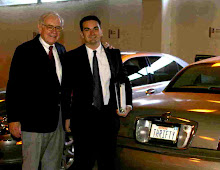Quit whining about gas prices and buy oil!
ExxonMobil reported earnings yesterday of $10.36 billion in the second quarter. Surely this will get the ignorant public and federal lawmakers (whose job it is to appease this ignorant public) upset. And to some extent it upsets me too, but it isn’t that magnitude of the company’s earnings that is outrageous, it is the company’s earnings relative to the capital with which they are working. At the beginning of the quarter, the company had about $216 billion in total assets – of which only $6 billion was paid for with long-term borrowing – and $112 billion in equity. This means that a fairly unlevered company was earning an annualized return on equity of nearly 37% and an annualized ROA of 19%. The PE is now about 10. Numbers like this generally spell good investment.
There is more to it than this though. For instance, the company will be spending substantially more on exploration and capital expenditures this year. They had better, since they got yelled at by Congress after they made $10 billion in Q4 of 2005. (Note, though, that nothing came of these hearings, indicating that it was done merely for political show.) If you are going to make so much money, the argument went, you should at least spend it looking for oil at home. Well they have, and if they do indeed increase the supply of oil this should help gas prices, making me happy.
What I am trying to suggest is that a purchase of XOM may not be such a bad idea. Not as an investment, but as a hedge. This hedge will make the important assumption that oil company profits and gas prices are strongly correlated, but this assumption is supported by past data.
My gas-guzzling SUV often provides me no more than 15 miles of in-town driving per gallon of gas. Living in a small community with a short drive to work, this translates in to about $40 at the gas pump every two weeks. $40 X 26 = $1040 per year. Now assume that XOM will go up 20% in the next year and the market will go up 5%. If I buy 100 shares of XOM for $6600 and earn 20% I will have $990 more in one year than I would have had I invested in the market. So even if gas prices nearly double, I have locked in the current price of around $3/gallon.
Now assume that gas prices actually decline to around $2.50. XOM now earns me only 3%, but the market still returns 5%. In this case I will have earned $230 less by purchasing XOM than I could have otherwise, but my annual cost of gas is also less, now $866. (that is, $1040*[2.50/3.00]) My effective annual cost of gas in this scenario is now $866+$230 = $1096, so again I have locked in a price of around $3.00/gallon.
Of course there are other ways to hedge against this risk. Purchasing oil futures contracts is perhaps the most direct, but is probably not practical. However anyone with a brokerage account can easily set up this hedge right now. Then again, if you are bearish on oil stocks, then this hedge doesn’t make sense. But I don’t think you will find many people bearish on oil for some time.
So if gas prices hurt you as they do many people, I would suggest a purchase in the oil sector. For me, it would be a rational, but yet emotional, decision. I really hate paying a lot for gas. But if I can fill up my gas-guzzling SUV while knowing that my XOM stock is going up, I won’t hate it nearly as much.

